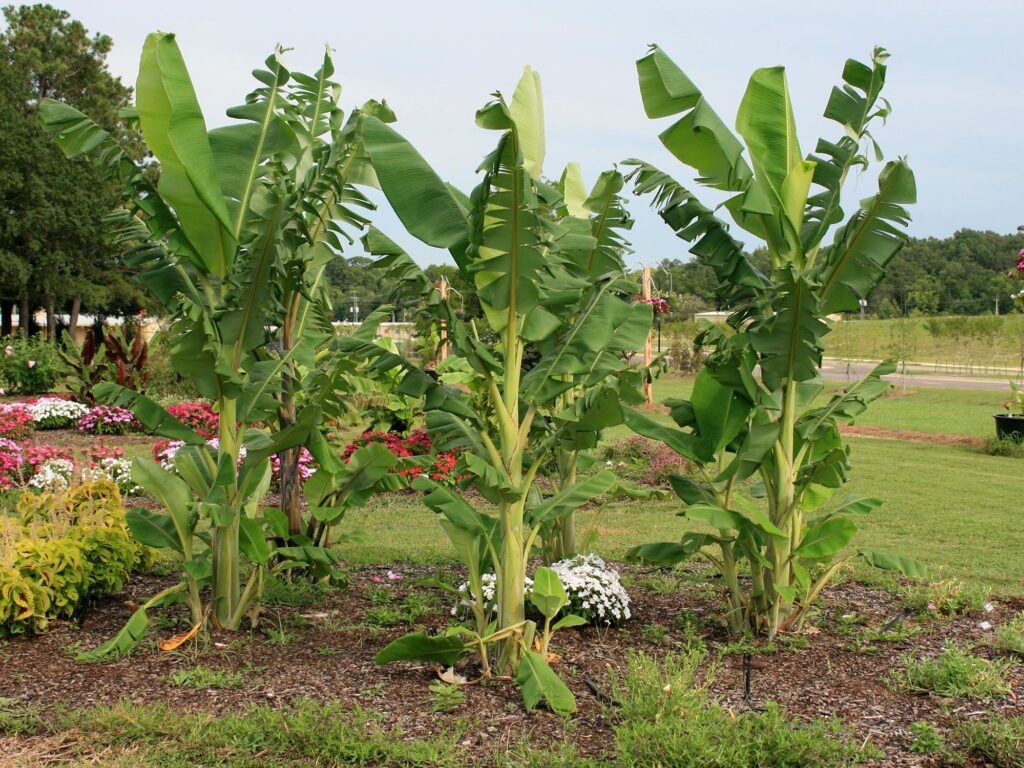Bananas, with their luscious fruit and lush foliage, have long captivated gardeners and plant enthusiasts alike. Beyond their delicious taste and tropical appeal, growing bananas in your garden can offer a host of benefits, from enhancing the aesthetic beauty of your outdoor space to providing a sustainable source of fresh fruit. In this article, we’ll delve into the fascinating world of banana cultivation, exploring everything from planting to harvesting and beyond.
I. Introduction
A. Fascination with Bananas Bananas hold a special place in the hearts of many, with their vibrant yellow fruit symbolizing tropical bliss and culinary delight.
B. Benefits of Growing Bananas in Your Garden Growing bananas at home offers numerous advantages, including access to fresh, organic fruit, aesthetic appeal, and the satisfaction of cultivating your own tropical oasis.
C. Overview of the Banana Plant The banana plant, scientifically known as Musa spp., is a herbaceous flowering plant belonging to the Musaceae family. It is characterized by large, paddle-shaped leaves and clusters of fruits known as hands.
II. Planting Bananas
A. Selecting the Right Variety
1. Considerations for Climate and Soil Choosing the right banana variety depends on factors such as climate, soil type, and available space in your garden.
2. Choosing Disease-Resistant Varieties Opting for disease-resistant banana cultivars can help mitigate the risk of common fungal and bacterial diseases, ensuring a healthy and productive banana crop.
B. Ideal Planting Conditions
1. Sunlight Requirements Bananas thrive in full sun to partial shade, requiring at least six to eight hours of sunlight daily for optimal growth and fruit production.
2. Soil Preparation and Drainage Well-draining, fertile soil with a pH range of 5.5 to 6.5 is ideal for banana cultivation. Proper soil preparation, including amending with organic matter and ensuring adequate drainage, is crucial for successful banana growth.
C. Planting Process
1. Digging the Hole Prepare planting holes that are twice the size of the banana rhizome, ensuring proper spacing between plants to allow for adequate growth and air circulation.
2. Positioning and Planting the Banana Rhizome Position the banana rhizome in the center of the planting hole, making sure the top of the rhizome is level with the soil surface. Backfill the hole with soil and water thoroughly to settle the soil around the roots.
III. Growth and Care
A. Watering and Fertilization
1. Proper Irrigation Techniques Provide consistent moisture to banana plants, ensuring that the soil remains evenly moist but not waterlogged. Drip irrigation or soaker hoses are ideal for delivering water directly to the root zone.
2. Nutrient Requirements and Fertilization Schedule Bananas are heavy feeders and benefit from regular applications of balanced fertilizer to support healthy growth and fruit production. Apply fertilizer according to the recommended schedule, avoiding excessive nitrogen, which can lead to lush foliage but poor fruit development.
B. Maintenance Practices
1. Mulching and Weed Control Apply a layer of organic mulch around banana plants to conserve soil moisture, suppress weed growth, and regulate soil temperature. Regularly remove weeds to prevent competition for nutrients and water.
2. Pruning Dead Leaves and Suckers Remove dead or damaged leaves promptly to maintain plant health and aesthetics. Additionally, periodically thin out excess suckers to focus the plant’s energy on fruit production.
C. Protection Against Pests and Diseases
1. Common Banana Pests Keep an eye out for common banana pests such as aphids, spider mites, and banana weevils, and take appropriate measures to control their populations using organic or chemical methods.
2. Disease Prevention and Treatment Implement preventive measures such as proper sanitation, adequate spacing between plants, and regular inspection for signs of disease. Treat fungal and bacterial infections promptly with appropriate fungicides or bactericides.
IV. Harvesting and Enjoying Bananas
A. Time to Harvest
1. Signs of Ripeness Determine the optimal time to harvest bananas by observing changes in fruit color, size, and texture. Ripe bananas exhibit vibrant yellow coloration and a slight softening of the fruit.
2. Harvesting Techniques Use sharp pruning shears or a knife to cut banana hands from the plant, taking care to leave a portion of the stem attached to the fruit for optimal shelf life.
B. Storage and Ripening
1. Storing Bananas Properly Store freshly harvested bananas in a cool, well-ventilated area away from direct sunlight to slow down ripening and extend shelf life. Avoid refrigerating bananas, as cold temperatures can cause chilling injury and affect fruit quality.
2. Ripening Process Accelerate the ripening process of green bananas by placing them in a paper bag with a ripe apple or tomato, which releases ethylene gas and promotes ripening. Check bananas regularly and consume them once fully ripe for the best flavor and texture.
V. Conclusion
A. Summary of Benefits of Growing Bananas In summary, planting bananas in your garden offers a myriad of benefits, including access to fresh, nutritious fruit, enhancing the aesthetic appeal of your outdoor space, and the satisfaction of cultivating a tropical plant in your own backyard.
B. Encouragement to Plant Bananas in Your Garden Whether you’re a seasoned gardener or a novice enthusiast, consider adding banana plants to your garden for a touch of tropical flair and a sustainable source of delicious fruit. With the right care and attention, you can enjoy the rewards of growing bananas and experience the joy of harvesting your own homegrown produce.
C. Appreciation for the Versatility and Delight of Bananas As we’ve explored in this article, bananas are not only a tasty and nutritious fruit but also a versatile plant that adds beauty and functionality to any garden. Whether enjoyed fresh, in smoothies, or as a culinary ingredient, bananas are sure to delight the senses and bring a taste of the tropics to your home.
By incorporating bananas into your garden, you can reap the rewards of their lush foliage, delectable fruit, and the satisfaction of nurturing a plant that has captured the hearts of gardeners around the world. So why wait? Plant bananas in your garden today and experience the magic of growing your own tropical oasis.



